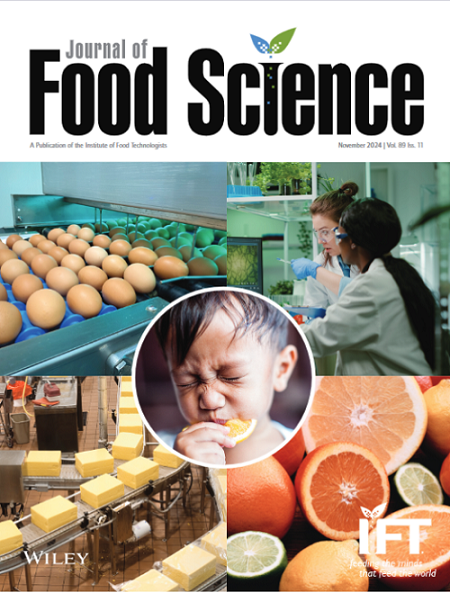Sustainable Utilization of Poppy Seed Oil By-Products in Gluten-Free Cookie Production: Advancing Nutrition via Waste-Reducing Strategies
Abstract
ABSTRACT
The increasing demand for gluten-free (GF) functional foods and sustainable ingredient innovation underscores the importance of valorizing food by-products. This study investigated the use of poppy seed cake flour (PSCF), a cold-pressed oil by-product, as the primary flour in GF cookies. PSCFs derived from blue, yellow, and white poppy seeds were used to produce GF cookies at 50%, 70%, and 100% substitution levels. The nutritional composition, mineral content, amino acid and fatty acid (FA) profiles, antioxidant capacity (cupric-reducing antioxidant capacity [CUPRAC], 1,1-diphenyl-2-picryl-hydrazyl [DPPH], ferric reducing ability of plasma [FRAP], total phenolic content [TPC]), physical analysis, and hardness were all investigated. Data were statistically evaluated using analysis of variance and principal component analysis. PSCF cookies containing 100% blue PSCF had the highest protein content (34.56%), calcium (85.96 ppm), phosphorus (90.66 ppm), and antioxidant activity (0.2186 CUPRAC, 0.0860 DPPH, 0.088 FRAP mgTroloxeqv/mL). The TPC of the samples was 0.094 mg gallic acid equivalent (GAE)/mL. PSCF cookies were high in essential amino acids such as lysine (799 nmol/g) and glutamic acid (>6200 nmol/g), while linoleic acid dominated the FA profile (up to 52.388 nmol/g). Higher PSCF incorporation increased hardness while maintaining acceptable spread ratios. Results demonstrated that PSCF incorporation significantly improved protein, essential amino acid (notably lysine), and mineral contents, particularly calcium, magnesium, and iron. Cookies enriched with PSCF exhibited favorable FA profiles dominated by linoleic and oleic acids, along with enhanced antioxidant activity, especially in 100% blue PSCF cookies. Hardness and darker coloration were within acceptable sensory ranges. Overall, PSCF significantly offers a sustainable, nutrient-rich flour alternative aligned with circular economy principles.
Practical Applications
This study highlights PSCF as a sustainable, low-cost ingredient that can be transformed from an oil-processing by-product into value-added gluten-free cookies. Its use addresses industry needs for circular economy strategies while reducing waste. PSCF-enriched cookies provide higher protein, essential amino acids, minerals, unsaturated FAs, and antioxidants, making them suitable for celiac patients, plant-based consumers, and health-conscious markets. Beyond cookies, PSCF can be extended to other gluten-free products such as breads, crackers, and snack bars. Its adoption supports clean-label innovation, cost reduction, and product differentiation for manufacturers seeking sustainable and functional solutions.


 求助内容:
求助内容: 应助结果提醒方式:
应助结果提醒方式:


